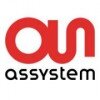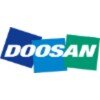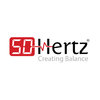Filter interviews by
Dhoot Transmission Interview Questions, Process, and Tips for Experienced
Dhoot Transmission Interview Experiences for Experienced
20 interviews found
I appeared for an interview in Jan 2025.
(2 Questions)
- Q1. What is the tolerance ?
- Ans.
Tolerance refers to the acceptable range of variation in a measurement or specification.
Tolerance is important in manufacturing to ensure products meet quality standards
It is the difference between the upper and lower limits of a dimension
For example, if a part is supposed to be 10 cm long with a tolerance of +/- 0.1 cm, it means the actual length can be between 9.9 cm and 10.1 cm
- Q2. What is the lines?
- Ans.
The lines refer to the code of a software program or the physical lines on a production line.
Lines of code in a software program
Lines on a production line in manufacturing
Lines of communication in a team or project
(2 Questions)
- Q1. What is drawing ?
- Ans.
Drawing is the act of creating a visual representation of an object or scene using lines and shapes.
Drawing involves using various tools such as pencils, pens, markers, and brushes.
Different techniques like shading, hatching, and stippling can be used to create depth and texture in drawings.
Examples of drawing include sketches, illustrations, and portraits.
Drawing can be done on paper, canvas, digital devices, or other
- Q2. What is the 5s?
- Ans.
5S is a methodology for organizing a workplace, focusing on efficiency and safety.
Sort - separate necessary items from unnecessary ones
Set in order - arrange items in a logical manner for easy access
Shine - keep the workplace clean and tidy
Standardize - establish guidelines for maintaining the first 3 S's
Sustain - ensure the practices are consistently followed over time
(2 Questions)
- Q1. What is the instrument and types?
- Ans.
Instruments are tools used to measure, observe, or manipulate variables in a specific field.
Types of instruments include measuring instruments, observation instruments, and manipulation instruments.
Examples of instruments include thermometers, microscopes, and pipettes.
- Q2. What is the first angle and third angle?
- Ans.
First angle and third angle are two different methods used in engineering drawings to represent the orientation of an object.
First angle projection is commonly used in Europe and Asia, where the top view is placed below the front view.
Third angle projection is commonly used in North America, where the top view is placed above the front view.
Understanding the difference between first angle and third angle projection is ...
Interview Preparation Tips
Top Dhoot Transmission Npd Qa Engineer Interview Questions and Answers
Npd Qa Engineer Interview Questions asked at other Companies
(2 Questions)
- Q1. Types of transformer
- Q2. Electric connection of house
CNC Machine Operator Interview Questions asked at other Companies
I appeared for an interview in Jan 2025.
Yes electrical design engineer releted questions
(3 Questions)
- Q1. Self introductions
- Q2. Field related questions
- Q3. Software related questions
Interview Preparation Tips
Design Engineer Interview Questions asked at other Companies
I applied via Approached by Company and was interviewed in Jun 2024. There were 3 interview rounds.
(2 Questions)
- Q1. What is the meaning of HR what kind of roles and responsibilities done by the HR
- Q2. Why you choose MBA in HR
Talking about how to handle manpower the main topic is woman is a good manager or not
How to manage A large group of people how to solve their problems
Interview Preparation Tips
HR Executive Interview Questions asked at other Companies
Dhoot Transmission interview questions for popular designations
(1 Question)
- Q1. Tell me about yourself
(1 Question)
- Q1. Explain about tooling
- Ans.
Tooling refers to the process of designing and manufacturing tools or equipment used in production.
Tooling involves creating molds, dies, jigs, fixtures, and other equipment used in manufacturing processes.
It plays a crucial role in ensuring the quality and efficiency of production.
Tooling can be customized based on specific production requirements.
Examples of tooling include injection molds for plastic parts, stamping...
Interview Preparation Tips
Design Engineer Interview Questions asked at other Companies
Get interview-ready with Top Dhoot Transmission Interview Questions
I applied via Approached by Company

(4 Questions)
- Q1. Basic knowledge of tool & die making
- Q2. Basic knowledge of diploma in tool & die making
- Q3. Mould basics. .
- Q4. Press tool basics. .
(1 Question)
- Q1. Types of ejection. .
- Ans.
Types of ejection refer to different methods of removing a component or object from a system or device.
Mechanical ejection - using physical force to push out the component, like a spring-loaded mechanism
Pneumatic ejection - using compressed air to push out the component, commonly seen in airsoft guns
Hydraulic ejection - using fluid pressure to push out the component, often used in industrial machinery
Electromagnetic ej...
Senior Design & Development Engineer Interview Questions asked at other Companies
I applied via Company Website and was interviewed in Jul 2023. There were 2 interview rounds.

(5 Questions)
- Q1. Whate do you like about working at Dhoot Transmission Pvt Ltd,?
- Ans. Dhoot Transmission Pvt Ltd commited to maintain and continually improve our environment and occupational health safety management system and business operations by ensuring consultation and participation of workers
- Q2. What do you dislike about working at Dhoot Transmission Pvt Ltd
- Ans. Five process at Dhoot Transmission Pvt Ltd (1) ceantine food and traveling mansment time loss
- Q3. What is the Acc and LPC process?
- Ans.
Acc and LPC process stands for Accumulation and Last Point of Contact process in manufacturing.
Accumulation process involves collecting and storing items in a specific area before they move to the next stage of production.
Last Point of Contact process refers to the final step in the manufacturing process where the product is inspected and prepared for shipping.
Acc and LPC processes are crucial for ensuring quality cont
- Q4. Give minimum 5 direct at crimping process?
- Ans.
Direct at crimping process involves applying pressure to a connector to secure it to a wire or cable.
Ensure proper alignment of the connector and wire before crimping
Use the appropriate crimping tool for the connector type and wire gauge
Apply even pressure along the entire length of the crimp
Inspect the crimped connection for any signs of damage or irregularities
Test the crimped connection for secure attachment and con
- Q5. Acc all process in writing harness.
- Ans.
Writing harness involves documenting all processes accurately.
Document all steps involved in the process
Include detailed instructions and specifications
Ensure clarity and accuracy in writing
Interview Preparation Tips
Line Leader Interview Questions asked at other Companies
I applied via Company Website and was interviewed before Jan 2023. There was 1 interview round.
(5 Questions)
- Q1. Taranformer rating ....... KVA MVA HZ
- Q2. Ohm low ...........
- Q3. Current of unit .......
- Ans.
The question is asking about the current of a unit.
The current of a unit refers to the amount of electric current flowing through a specific unit or device.
It is typically measured in amperes (A) or milliamperes (mA).
The current of a unit can vary depending on the specific device or circuit being discussed.
For example, the current of a unit could refer to the current flowing through a resistor, a transistor, or a motor...
- Q4. Transformers rating in KVA
- Ans.
Transformers are rated in KVA (kilovolt-amperes) to indicate their power capacity.
KVA stands for kilovolt-amperes, which is a unit of apparent power.
The KVA rating of a transformer indicates the maximum amount of power it can handle.
Transformers are available in various KVA ratings to suit different power requirements.
Higher KVA ratings indicate higher power capacity.
For example, a transformer with a 100 KVA rating can
- Q5. What is loop law?
- Ans.
Loop law, also known as Kirchhoff's voltage law, states that the sum of the voltages in any closed loop in a circuit is zero.
Loop law is a fundamental principle in electrical engineering.
It is also known as Kirchhoff's voltage law (KVL).
According to loop law, the algebraic sum of the potential differences (voltages) around any closed loop in a circuit is always zero.
It is based on the principle of conservation of energ...
Interview Preparation Tips
Top Dhoot Transmission Electrical Engineer Interview Questions and Answers
Electrical Engineer Interview Questions asked at other Companies
I applied via Approached by Company and was interviewed in Oct 2022. There were 2 interview rounds.

(3 Questions)
- Q1. 1. How to check lebel ?
- Ans.
To check the label, inspect the information printed on it for accuracy and completeness.
Verify that all required information is present on the label, such as product name, ingredients, warnings, and usage instructions.
Ensure that the label is legible and easy to read.
Check for any spelling or grammatical errors on the label.
Confirm that the label meets any regulatory requirements or industry standards.
Compare the label...
- Q2. 2. How to check good harnesses ?
- Ans.
To check good harnesses, inspect for proper connections, secure fastenings, correct wire routing, and absence of damage or wear.
Inspect for proper connections between wires and connectors.
Check for secure fastenings, such as properly tightened screws or clamps.
Ensure correct wire routing, with wires organized and protected from potential damage.
Look for any signs of damage or wear, such as frayed wires or broken insula...
- Q3. 3. What's the problem mouth press?
- Ans.
The problem mouth press refers to an issue with the pressing mechanism of a machine used in quality inspection.
The problem could be related to a malfunctioning or misaligned press mechanism.
It could result in inconsistent or incorrect pressure being applied during inspection.
Examples of problems could include a stuck press, uneven pressure distribution, or a faulty sensor.
The issue may lead to inaccurate quality assess
Interview Preparation Tips
- Wiring Harness
Quality Inspector Interview Questions asked at other Companies
I applied via Walk-in and was interviewed in Dec 2022. There were 3 interview rounds.

(3 Questions)
- Q1. What is line balancing
- Ans.
Line balancing is the process of evenly distributing workload among workstations in a production line to optimize efficiency.
Line balancing aims to minimize idle time and maximize productivity
It involves assigning tasks to workstations based on their processing times
Example: In a manufacturing plant, line balancing ensures each workstation has a similar amount of work to do
- Q2. What is assembly balancing
- Ans.
Assembly balancing is the process of optimizing the work distribution among different workstations to improve efficiency and productivity.
Assembly balancing involves assigning tasks to different workstations in a way that minimizes idle time and maximizes throughput.
It helps in achieving a smooth flow of work and prevents bottlenecks in the production process.
Factors considered in assembly balancing include task time, ...
- Q3. What is cycle time and tact time
- Ans.
Cycle time is the total time it takes to complete a process, while tact time is the time it takes to produce one unit.
Cycle time includes all the time spent on a process, including wait time and processing time.
Tact time is the rate at which a product must be produced to meet customer demand.
For example, if a process takes 10 minutes to complete and the customer demand is 100 units per hour, the tact time would be 0.6 ...
(2 Questions)
- Q1. What is production and quality
- Ans.
Production is the process of creating goods or services, while quality refers to the standard of those goods or services.
Production involves the manufacturing or creation of goods or services.
Quality refers to the standard or level of excellence of those goods or services.
Production and quality are closely linked as the goal is to produce high-quality products efficiently.
Examples: In a manufacturing plant, production ...
- Q2. What is OLE and OEE
- Ans.
OLE stands for Overall Equipment Effectiveness and OEE stands for Overall Labor Effectiveness.
OLE measures the overall performance of equipment in a manufacturing plant.
OEE measures the overall performance of labor in a manufacturing plant.
Both metrics are used to identify areas for improvement and optimize efficiency.
Example: OLE can help identify equipment downtime and OEE can help identify labor productivity issues.
Top Dhoot Transmission Junior Engineer Interview Questions and Answers
Junior Engineer Interview Questions asked at other Companies
Top trending discussions






Dhoot Transmission Interview FAQs
The duration of Dhoot Transmission interview process can vary, but typically it takes about less than 2 weeks to complete.
Tell us how to improve this page.
Dhoot Transmission Interviews By Designations
- Dhoot Transmission Graduate Engineer Trainee (Get) Interview Questions
- Dhoot Transmission Electrical Engineer Interview Questions
- Dhoot Transmission Quality Inspector Interview Questions
- Dhoot Transmission Quality Engineer Interview Questions
- Dhoot Transmission Production Engineer Interview Questions
- Dhoot Transmission Design Engineer Interview Questions
- Dhoot Transmission Junior Engineer Interview Questions
- Dhoot Transmission Senior Engineer Interview Questions
- Show more
Interview Questions for Popular Designations
- Graduate Engineer Trainee (Get) Interview Questions
- Electrical Engineer Interview Questions
- Associate Interview Questions
- Team Lead Interview Questions
- Senior Associate Interview Questions
- Sales Executive Interview Questions
- Test Engineer Interview Questions
- System Engineer Interview Questions
- Show more
Dhoot Transmission Interview Process for Experienced
based on 11 interviews
Interview experience
Interview Questions from Similar Companies
Fast track your campus placements
Dhoot Transmission Reviews and Ratings
based on 949 reviews
Rating in categories
|
Quality Engineer
324
salaries
| ₹1.1 L/yr - ₹4.2 L/yr |
|
Production Engineer
184
salaries
| ₹0.9 L/yr - ₹6 L/yr |
|
Production Supervisor
96
salaries
| ₹1 L/yr - ₹4.6 L/yr |
|
Graduate Engineer Trainee (Get)
90
salaries
| ₹1 L/yr - ₹3 L/yr |
|
Design Engineer
87
salaries
| ₹1.5 L/yr - ₹5.5 L/yr |

Vestas

Wind World

Siemens Energy

Steag Energy Services
- Home >
- Interviews >
- Dhoot Transmission Interview Questions >
- Dhoot Transmission Interview Questions for Experienced
















